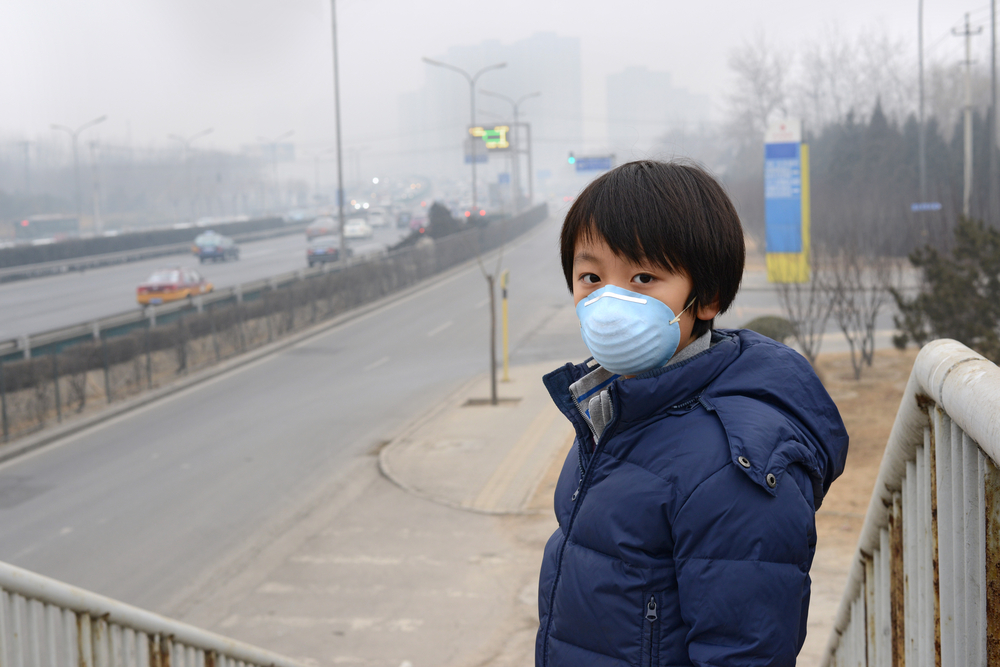Does a healthy economy need a healthy environment?
In China, there is no such thing as “environmentally-friendly economic growth”. The economic boom that the country has been through has proved to be a very successful one but on the other hand, this has resulted in an unhealthy environment for its ever-growing population.
The Chinese economy may have experienced a substantial expansion of its productive potential over the past 20 years but its ecological system is still paying an enormous price for it. Despite growing efforts to stop the construction of coal-fired power plants and shift to cleaner coal-fired power technology, it is estimated that, according to 2016 data in BP’s Statistical Review of World Energy, China is still relying on coal to supply at least 62 percent of its energy needs. Furthermore, according to the Chinese National Bureau of Statistics, coal consumption in China has increased by 0.4 percent since 2017, questioning Beijing’s approach in its efforts to tackle air pollution and switch to clean coal technology.
With1.386 billion (2017) people in China, the energy demands are enormous. Authorities are laying thousands of miles of new roads every year to fit the needs of the over-growing population and economy. Cities are being built everywhere, increasing the urge for more energy for domestic and industrial consumption. Looking back at the global financial crisis period, it can be observed that China’s energy consumption generated by exports dropped, while energy consumption generated by capital formation grew significantly. Over three quarters of China’s energy consumption growth was caused by capital formation between 2007 and 2010. This growth is mainly because of China’s economic stimulus measures put in place to tackle global recession, with a focus on infrastructure construction. China’s energy use went up 8% back in 2006, almost four times more than the rest of the world. Most of its industrial consumption being steered towards the steel, petro-chemicals, paper-making and coal-chemical industries.
Air pollution caused by coal-burning kills more than 400,000 people each year in China. In early 2018, it was estimated that PM2.5 levels Beijing alone was down 54% but nationwide air quality was experiencing very slow improvements while coal use kept increasing. According to a 2015 study by California-based Berkeley Earth, health complications such as strokes, heart and lung problems, resulting from severe air pollution have been the cause of death of an estimated 1.6 million people in China.
The levels of pollution in China do not only affect the health of its population. Cultural heritage and national treasures, which have always been kept and adored, are being destroyed by the ravaging pollution. Historic statues and monuments, which have long been symbolic of the Chinese people, will at some stage become dust and forgotten.
As reported by the government-run China Daily newspaper, Chinese officials have acknowledged the downside of unbridled development and have blamed the devastation of historic sites on “senseless actions” by local officials in pursuit of modernisation. Historic sites and monuments are at risk of permanent damage and some government officials have highlighted the need to raise awareness about the value of cultural heritage.Some have even likened the damage caused by pollution to that of cultural relics during the Great Leap Forward in the late 1950s and the Cultural Revolution between 1966 and 1976.
Among those historic monuments being affected by pollution is the 233 feet high Leshan Giant Buddha found in Sichuan. The imposing statue, with a head that appears lost in the trees, stares down on the confluence of three rivers. Although authorities gave it a multimillion-dollar facelift back in 2001, the seated figure, six years later, was stained black again, mostly because of acid rain and air pollution from coal burning. About 750 miles to the north, clouds of black dust coming off coal trucks have damaged the Yungang Grottoes, a World Heritage site in the heart of China’s coal belt. Melinda Herrold-Menzies, a professor of environmental studies at Pitzer College in Claremont, expressed astonishment that caves with such historical and archaeological importance would lie so close to “coal mines and an industrial nightmare of a city”. The 250 caves hold more than 50,000 statues of Buddha dating back to the 5th century, their heights ranging from less than an inch to 56 feet. In efforts to preserve the caves and its statues, nearby factories were relocated and truck traffic rerouted around the area but much of the coal dust which have been sitting on those statues have been left intact, for fear that the sandstone might not survive a cleaning. As visitors weave in and out of the caves, the damaged statues are very easy to pick out. Their red, blue and yellow paint have faded, and they look as if they are wearing a black trench coat or skirt.
Industrial development and coal burning are what would be blamed if ever these treasures are permanently damaged and lost. Coal-burning remains the biggest challenge that the Chinese authorities have to face but considering the rapid growth of the country, it seems almost impossible that someday China would emerge from these dusty and deadly clouds.
Despite its attempts to promote and implement less-polluting energy sources, China has still not been able to tackle its pollution problems. Its economic growth fuelled by foreign trade is said to be extremely high by world standards. Authorities claim that they have the economic situation under control as they have brought their overheating economy to a speedy-growth economy. The Chinese population needs a healthy environment for the years to come. As development in the industrial sector would be almost unstoppable, the population will need a healthier place to live and work for the future. Global warming, a significant growing problem, will surely be the centre of attention for the next decade and countries like China would need to fully comply to international regulations in order to deal more efficiently with its contributions to the global warming situation.

